The LaPorte County Historical Society Museum may not be the first place that comes to mind when you think of chilling true crime stories, but tucked away in this quiet Indiana town is a truly haunting exhibit that tells the tale of one of America’s most notorious female serial killers—Belle Gunness. We recently visited the museum while camping near Indiana Dunes National Park, and while the rest of the museum was weird and interesting, it was the Belle Gunness exhibit that was the main attraction. In this post, I’ll dive into my experience at the exhibit, what I learned about Belle’s gruesome history, and why this museum stop should be on every true crime fan’s radar.
If you want to skip right to photos from the exhibit- go here.
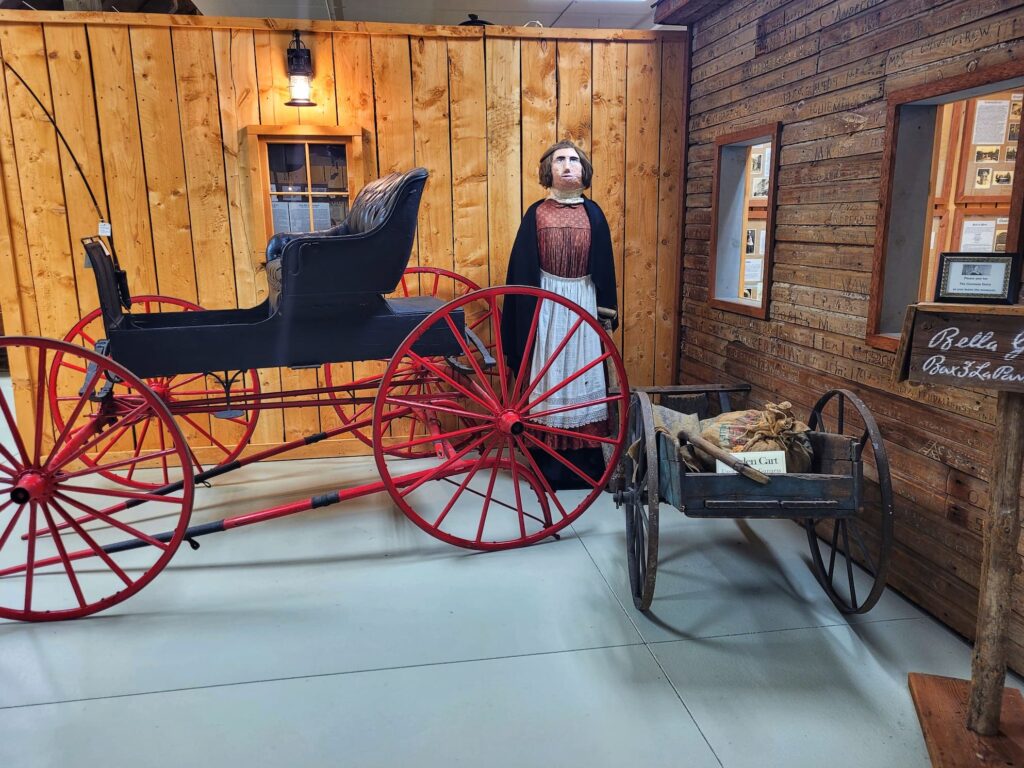
The Story of Belle Gunness
The Chicago Era
Belle Gunness was born as Byrnhild Paulsdatter Storseth in 1859 in Norway. When she was 21, she immigrated to the US and ended up in Chicago where she changed her name to Bella Petersen. In 1884 she married her first husband, fellow Swede Mads Sorensen- and then a series of unfortunate (for some) things began happening. First, their house burned down- but luckily there was insurance money! So they opened a confectionery. But then that mysteriously burned down too! But luckily, there was again insurance money. This time it was used to buy a new house. Belle and Mads fostered several children together, but two of them died under her care. After all this tragedy, Belle decided that Mads’ life insurance policy was too small, so she had him take out a bigger one. And it’s a good thing she did, since he died on the day that the two policies overlapped.
Belle Moves to La Porte
By now the neighbors were starting to get suspicious. The string of unfortunate events was pretty incredible, after all. So Belle took her 3 foster kids and used the newest insurance money to buy a farm in La Porte, Indiana. The family moved there in 1901. The next year, Belle married a local, Peter Gunness. Peter brought two daughters to the marriage, and the youngest was dead within a week of the nuptials. Eight months later, Peter also died- and Belle told quite a memorable story as to how. The story goes, Peter was sitting next to the stove, and bent over to pick up his shoes. When he bent over, he knocked into the stove, which caused a large pot of scalding water to burn him and a sausage grinder to fall from a shelf above and hit him on the head and the sausage grinder killed him. Allegedly.
Help Wanted
So, now single once again, Belle started putting ads into local Norwegian language newspapers throughout the Midwest. She was looking for a nice man (which money) to come be a partner on the farm. It’s unknown how many lonely men responded to her ads, but she definitely had correspondence with a lot. The ones she saw potential in, she invited out to visit the farm.
Belle also had help on the farm from hired local men. The most notable farmhand was Ray Lamphere, who was hired in 1907 and hoped to marry Belle. They became lovers, but never married. Remember that name, though, because Ray will come back into the story later.
What happened in 1908?
One lonely bachelor that we know definitely visited Belle’s farm was Andrew Helgelien, a farmer from South Dakota. He visited in 1908, but would not leave the farm alive. Two weeks into his visit to La Porte, Andrew had his money moved from South Dakota to a local bank, and then he and Belle cashed out the full account. The very next day, Andrew was gone. Andrew’s brother, Asle Helgelien, didn’t stop trying to reach him though, and continued writing letters to Belle asking where his brother was. Asle will come back into the story later too.
1908 was an important year in the Belle Gunness story. Belle got tired of Ray and fired him after having him arrested for trespassing multiple times. She hired a new farmhand, Joe Maxson. That same year, Belle also made a new will. She went to an attorney to have the will made so that everything would go to her three children. That same night, after visiting the attorney and buying a large can of kerosene in town, Belle, Joe, and the kids had a nice family evening at home. They had dinner, played games, and Belle gave the children each a special treat before bed.
The next morning, Joe woke up to the smell of smoke. He ran over to the house and tried to wake up Belle and the kids, but couldn’t. So he left to go get help from town. By the time the fire department got there, it was too late. In the corner of the basement they found the bodies of 3 children next to a woman’s body. But there was a catch, the woman was headless.
A Shocking Find
Now, here’s where Asle and Ray come back into the picture. At the time, they believed that Ray set the fire to kill Belle out of jealousy. He was charged with arson and murder, but only found guilty of arson. Asle, meanwhile, had come out from South Dakota to look for his brother. He and farmhand Joe began digging on the farm looking for clues. While digging in a trash pit, they found Andrew. He had been dismembered and tied up in a gunnysack before being buried. This sparked a frenzy, and the sheriff and his crew started on several days worth of digging around the farm. Thousand of tourists came to the “murder farm” to watch. In the end, they found at least 13 different bodies bured on the farm. Some estimates say that there were as many as 15,000 people at the farm the week of the discoveries. Vendors made bank selling refreshments and souvenirs. As the investigation continued, they determined that Belle had used her ads to lure men to the farm with the intent to kill them for their money. She then posioned them with arsenic or strychnine before hitting them over the head. All of the bodies were found stuffed in gunnysacks with the head, arms, and legs cut off.
The Mystery of Belle Gunness
Now, even though Ray was found guilty of arson, there are still many people who believe Belle herself set the fire. There’s disagreement on her full plan, though. Some think it was suicide to avoid getting caught, and others think the body in the basement wasn’t Belle and that she escaped. For years after the case there were Belle Gunness sightings around the country. Because the body in the basement was headless, they couldn’t prove that it was Belle. Some also thought that the body was too small to be Belle’s. Her false teeth were found, but they could have been placed there by Belle. A lot of people today who have worked on the case think it was severely mishandled during the original investigation. The body of maybe-Belle was buried in Forest Park Cemetery in Chicago. In 2007, they exhumed the body to try to DNA test it against saliva from a letter from Belle. The exhumers were surprised to also find the remains of 2 children in the coffin, but the leading theory there is that they were just careless when scooping remains from the basement. It turned out the saliva from the letter was too old and the DNA testing was inconclusive. And so, the mystery of Belle Gunness continues.
The Belle Gunness Exhibit at La Porte County Historical Society Museum
Ok, now that our history lesson’s out of the way- let’s get into the exhibit!

The first thing you’ll notice is the shed housing a lot of the exhibit. This was constructed from siding from an actual shed on the Gunness property that survived the fire. During the investigation, tourists carved their names and initials into the siding. The shed was later purchased (along with most of Belle’s property that was sold at auction) and moved. Eventually it was dismantled and the siding was given to the Historical Society.
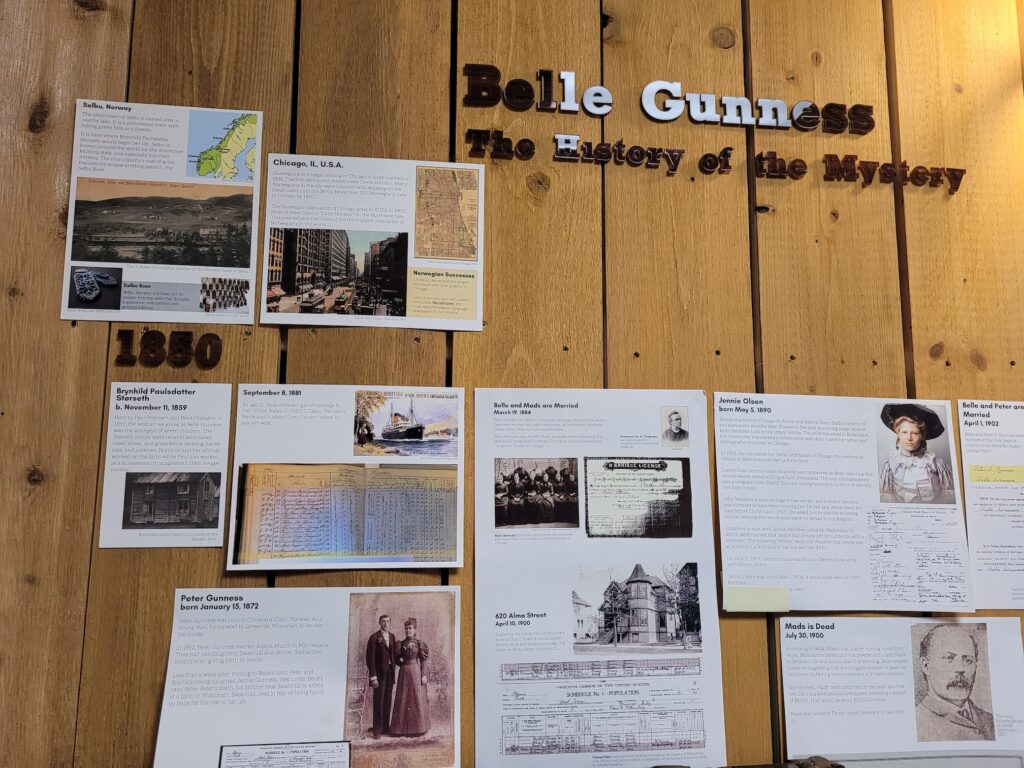
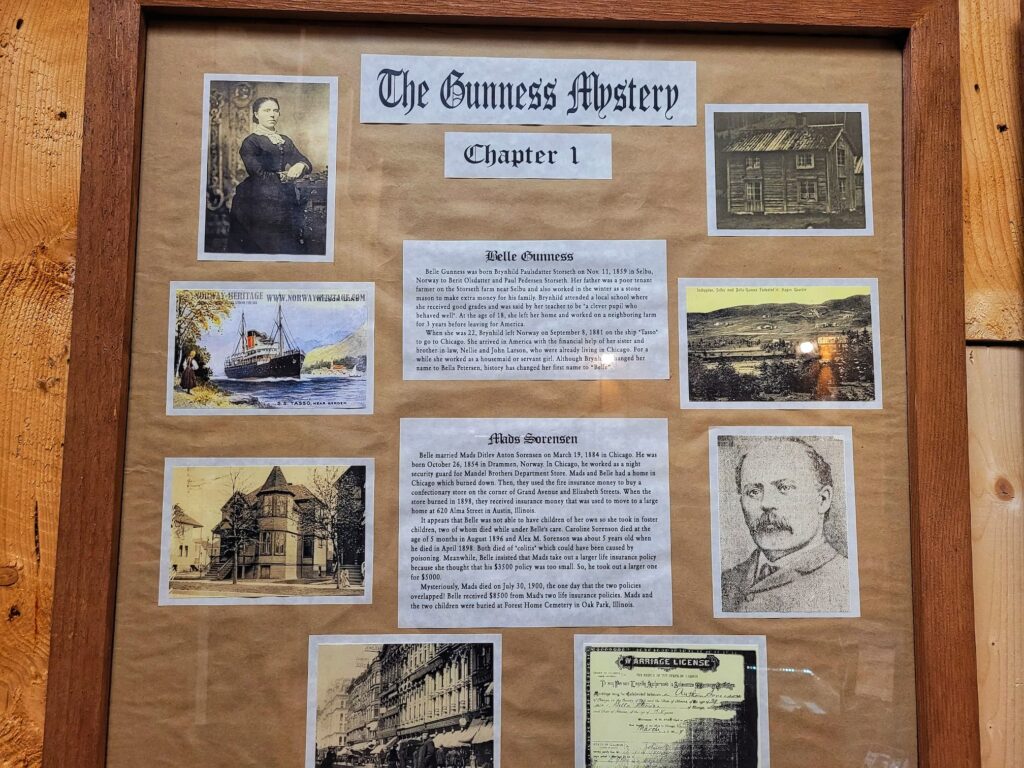
Inside the shed, a large portion of the walls is covered with information about the Belle Gunness story. The back wall has a large timeline, and the sidewalls have these framed cases with information and photos.
The exhibit is a mix of objects from the Gunness farm and things like books and magazines about Belle.
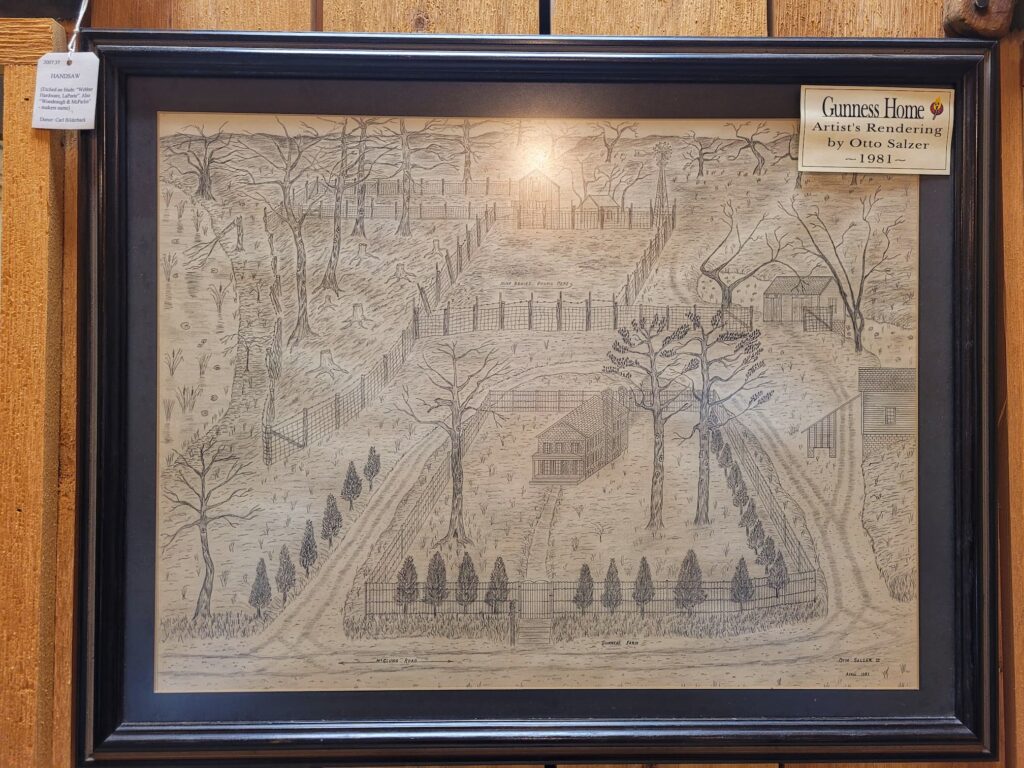
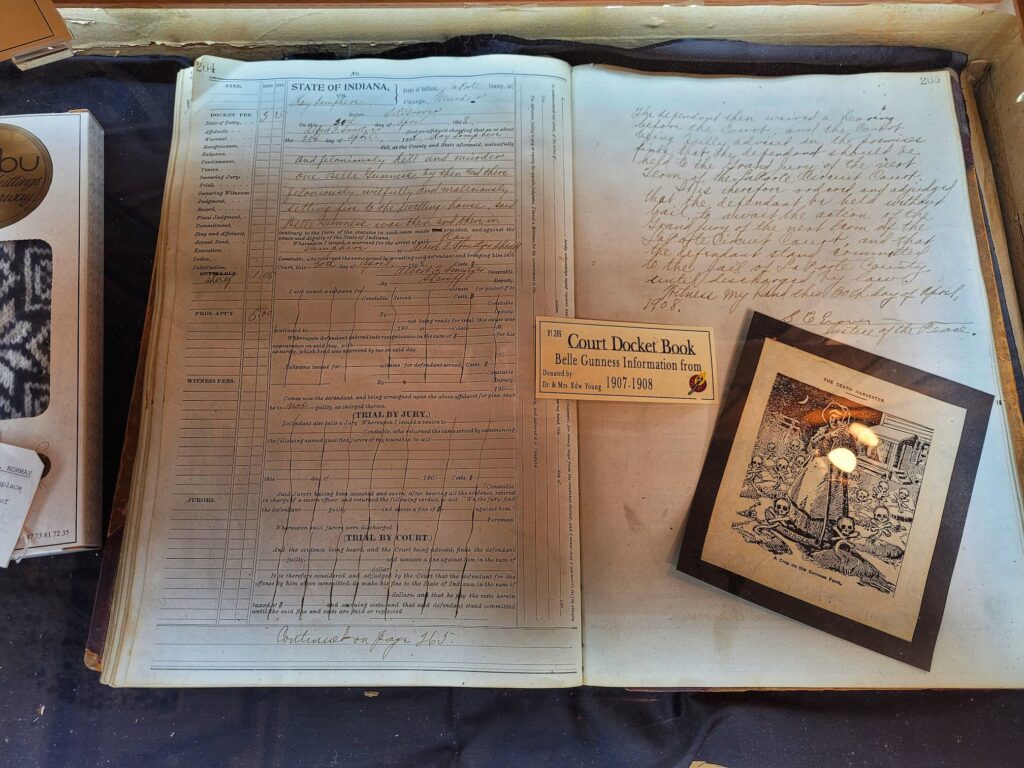
There are definitely some interesting things on display here. The most shocking of which is the skull of one of the unidentified victims. I won’t show the skull here, because I don’t think museums should display human remains (unless they were explicitly donated by the person themself). The Belle Gunness exhibit was one of the main reasons I wanted to visit the LaPorte County Museum, but Josh didn’t know anything about the story going in. He said afterwards that it was a weird experience, because he didn’t know what the exhibit was about at first. Then he started reading, but there was so much text, he thought it was just about an early pioneer- until he saw the human skull.
Below you can see some of the other finds from the farm- burned wood from the fire and objects left behind.
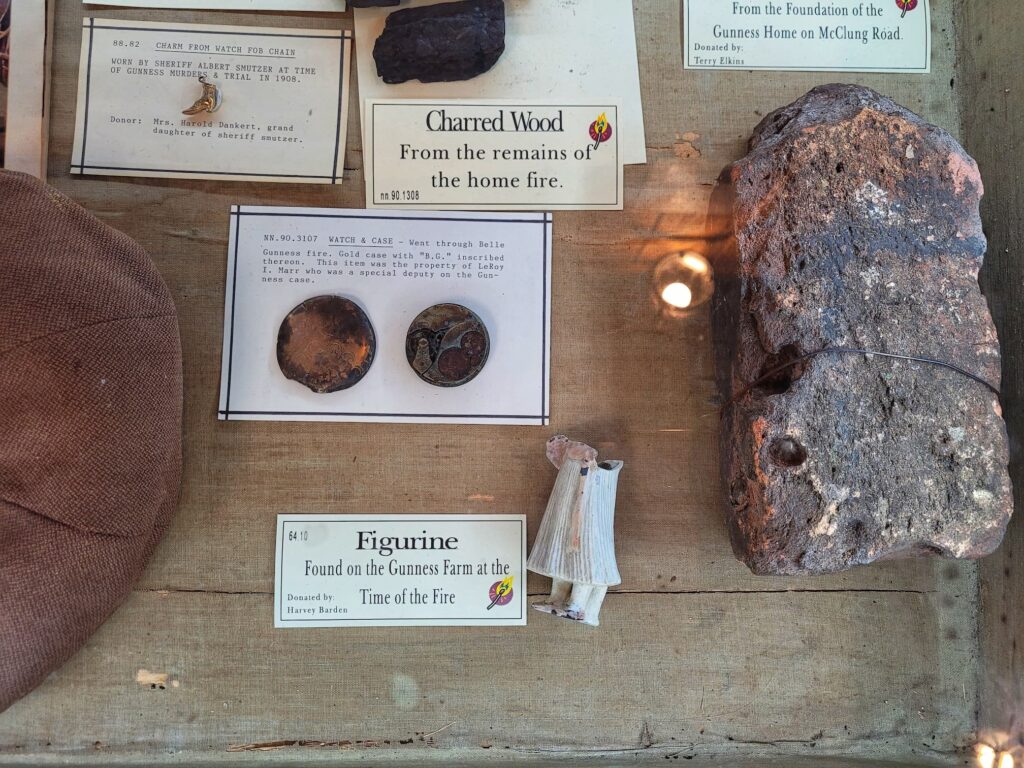
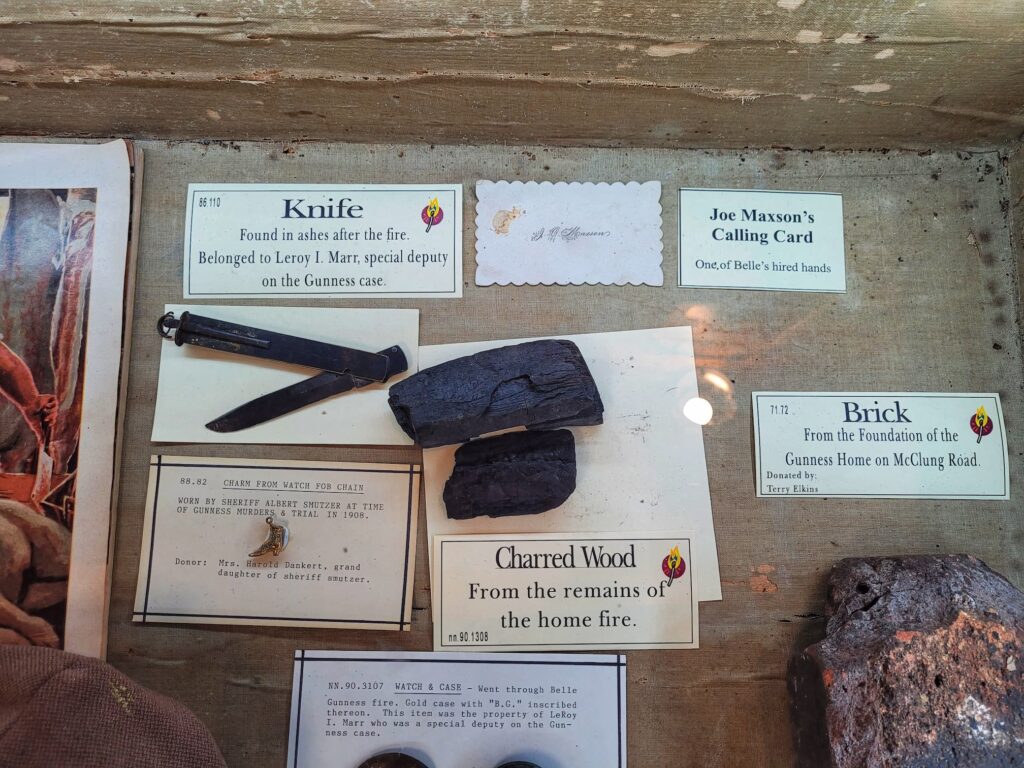
Besides the skull, the next grisliest artifact is probably the pieces from Belle’s coffin from when she (or whomever it really was) was exhumed in 2007.
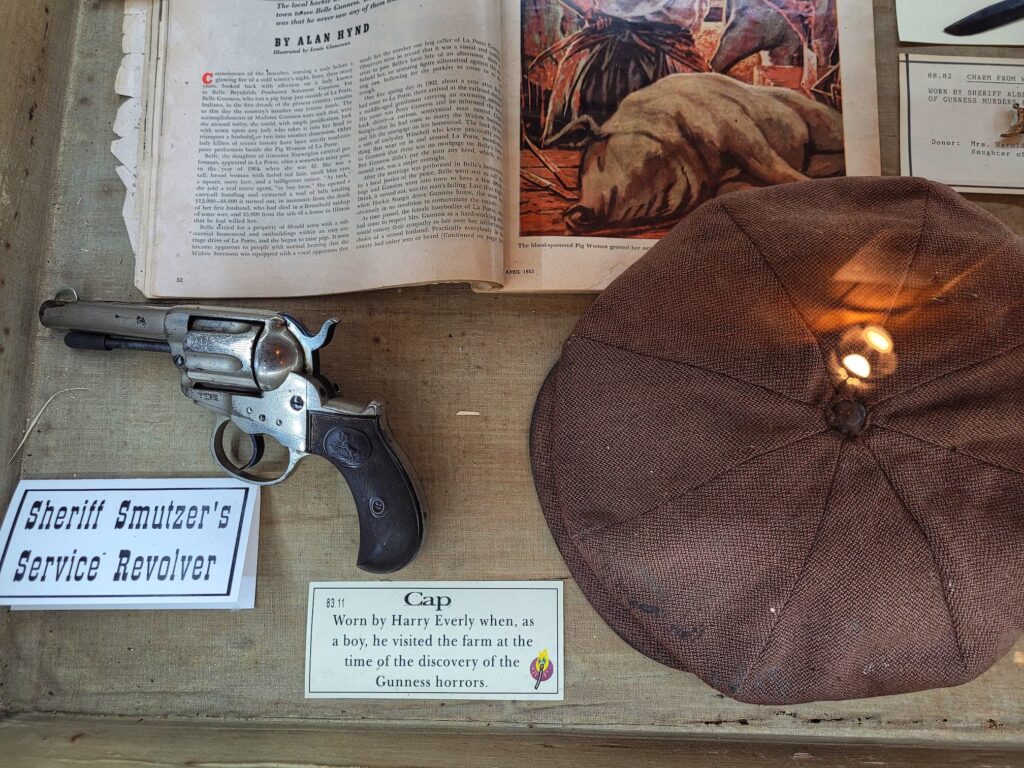

Around the shed exhibit are also objects from the farm, like tools and lanterns that were used by Belle or her hired hands.
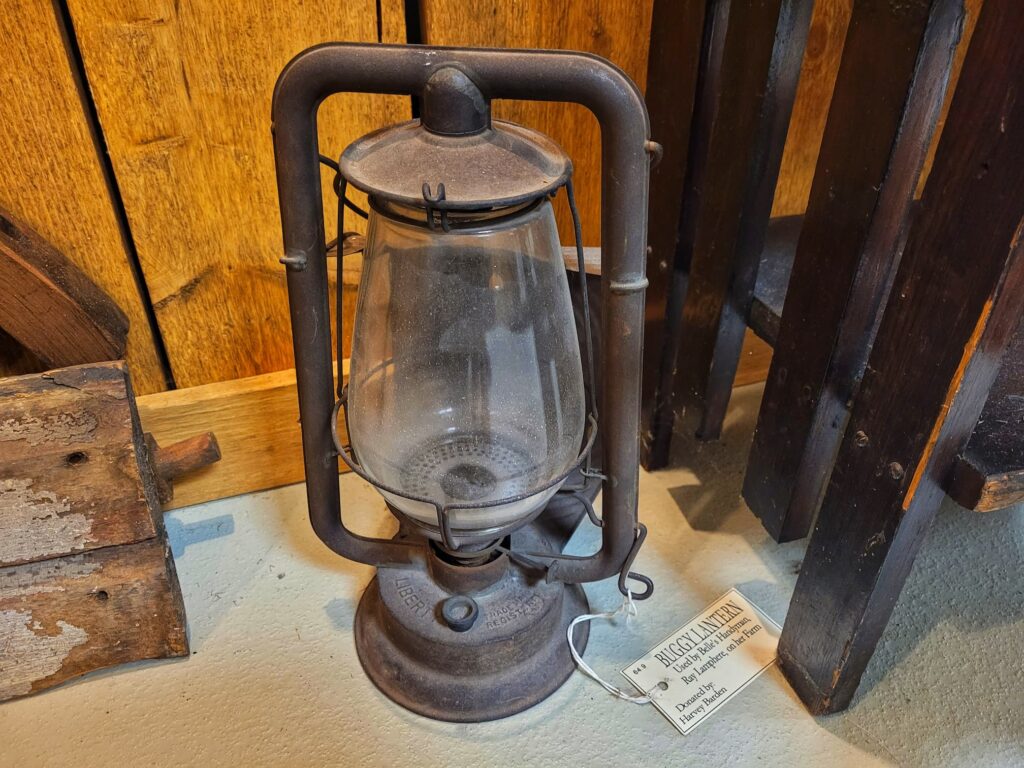
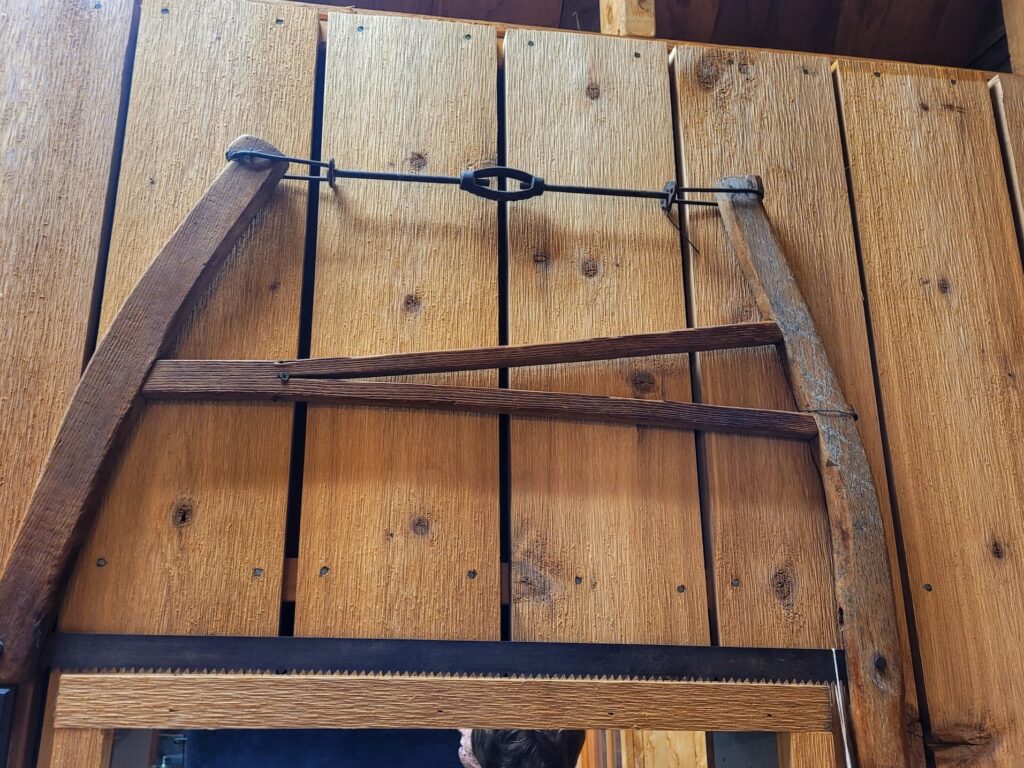
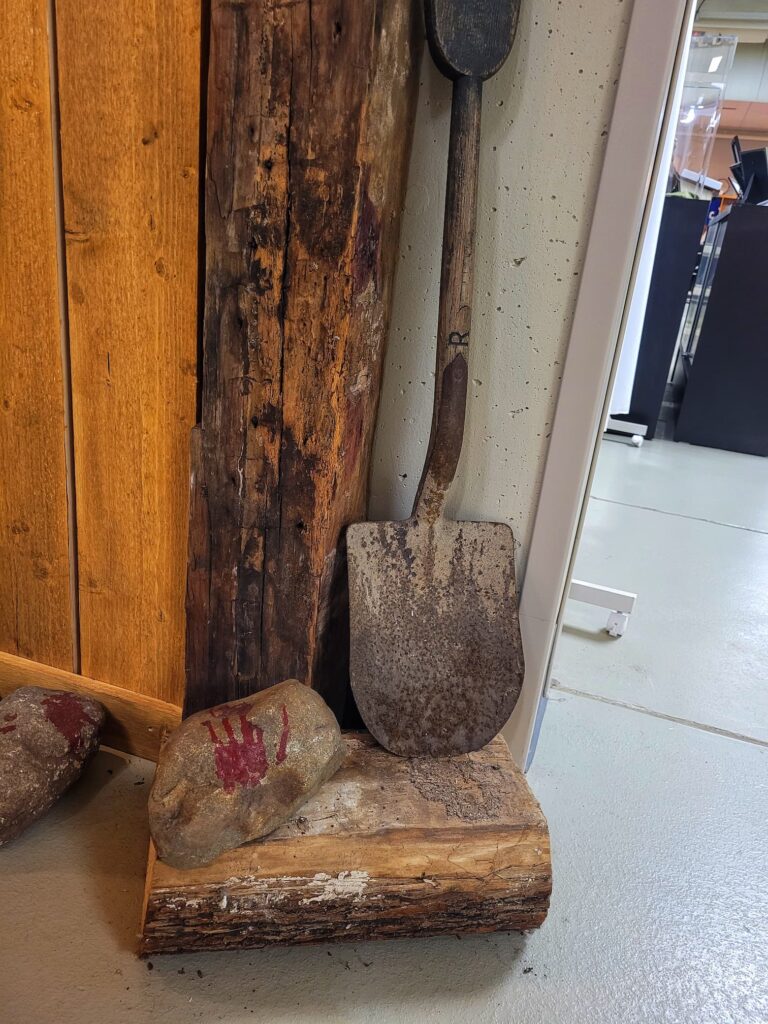
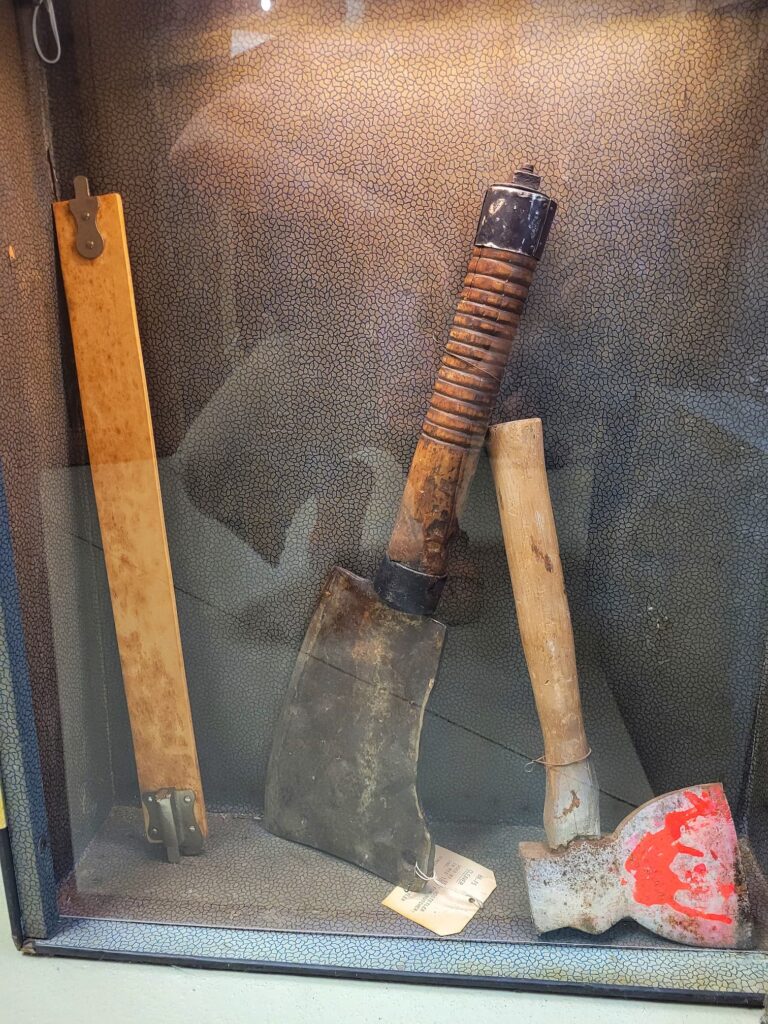
The bookcase in the photo below was made from wood from the chicken coop at Gunness Farm. The framed documents include songs and poems about Belle.
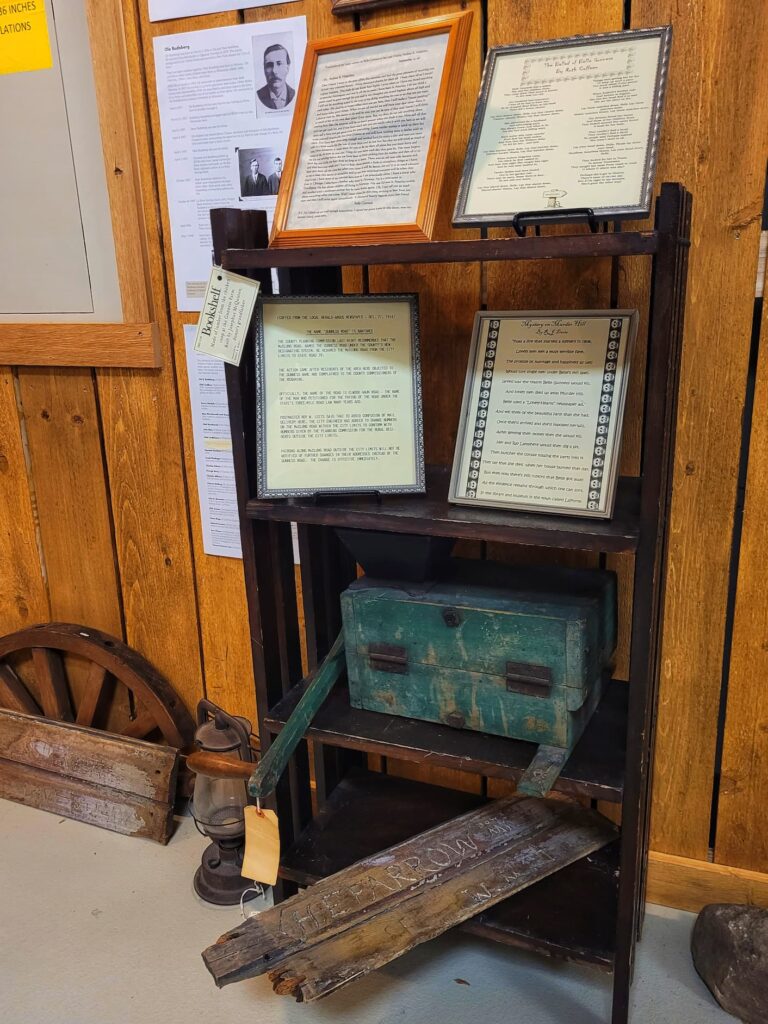
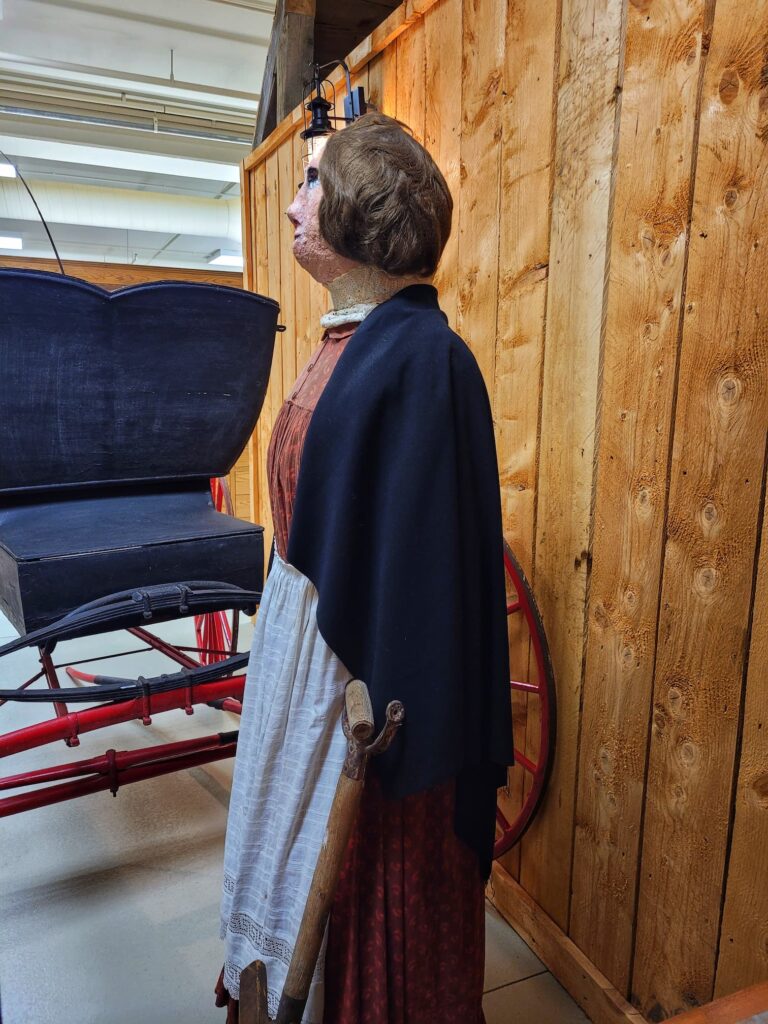
Finally, we have Belle’s garden cart, which was used to carry the bodies to where she buried them, as well as a representation of how the bodies would have looked in the gunnysacks.
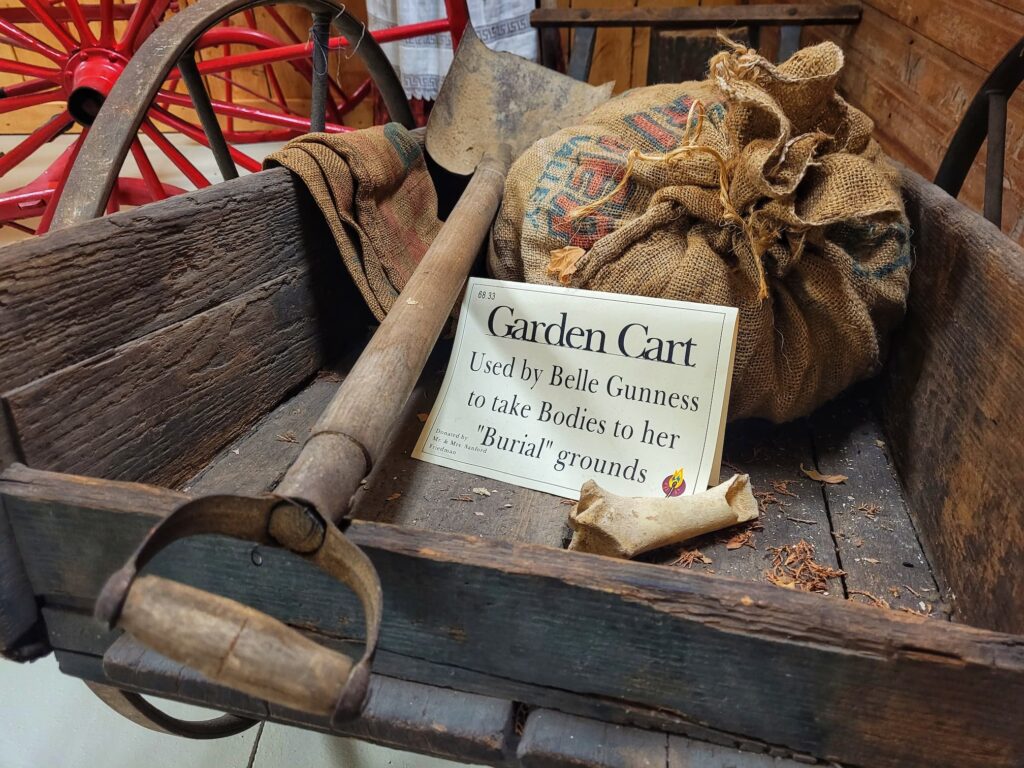
The gift shop of the La Porte County Historical Society Museum is, of course, full of Belle Gunness stuff. There’s books, DVDs, souvenirs, and everything you’d expect. The item I found most amusing, though, was that you can buy an envelope of print outs of the Gunness coroner’s inquisition.
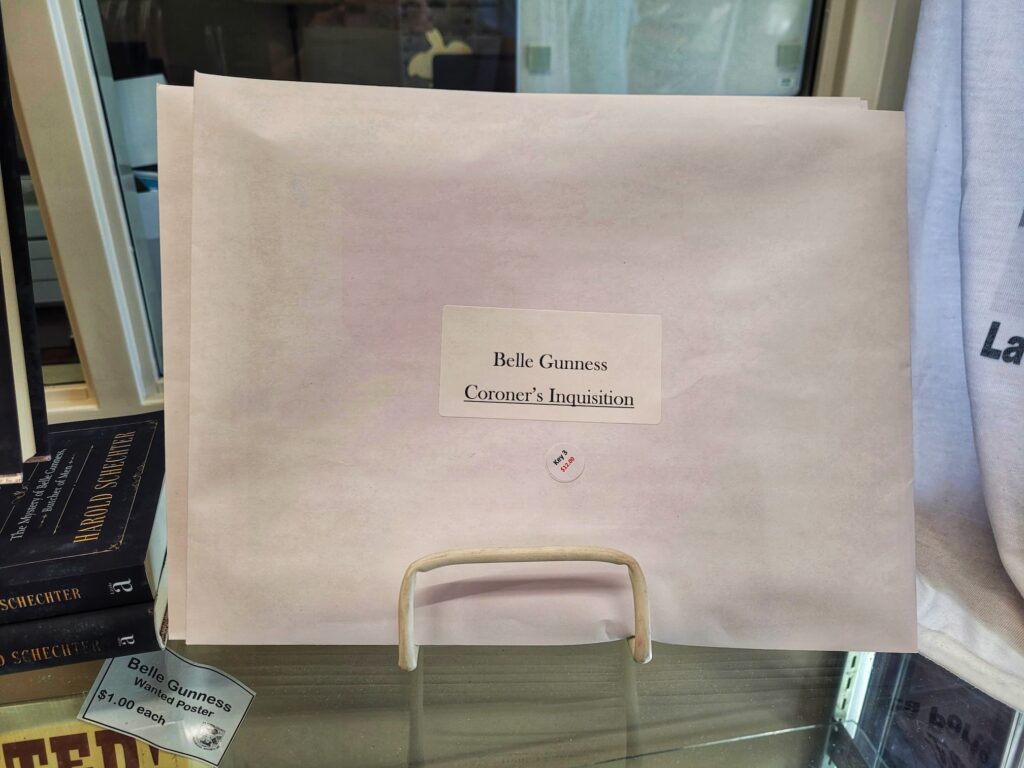








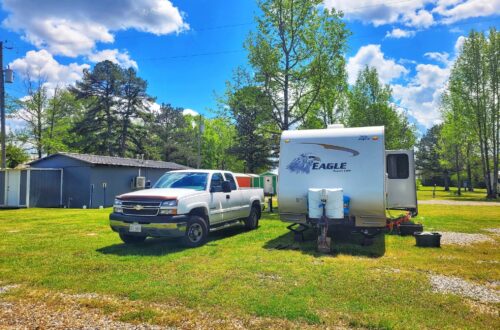
3 Comments on “True Crime in the Heartland: Exploring the Belle Gunness Exhibit”
Comments are closed.